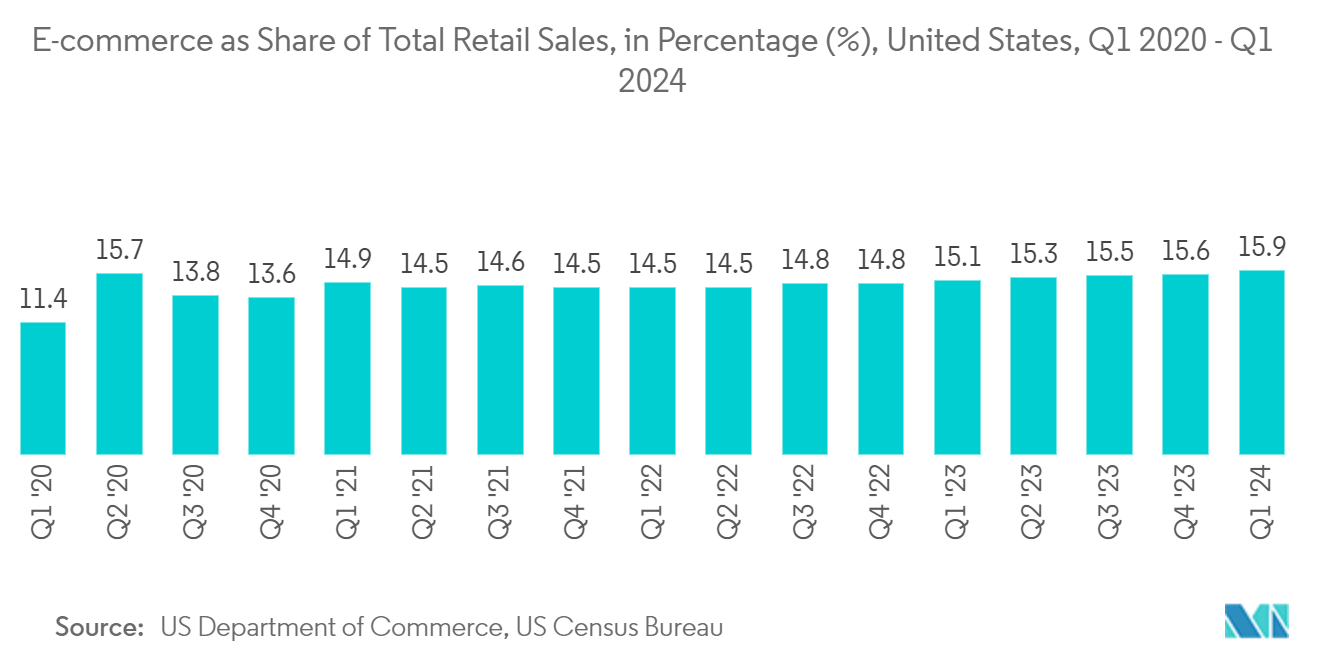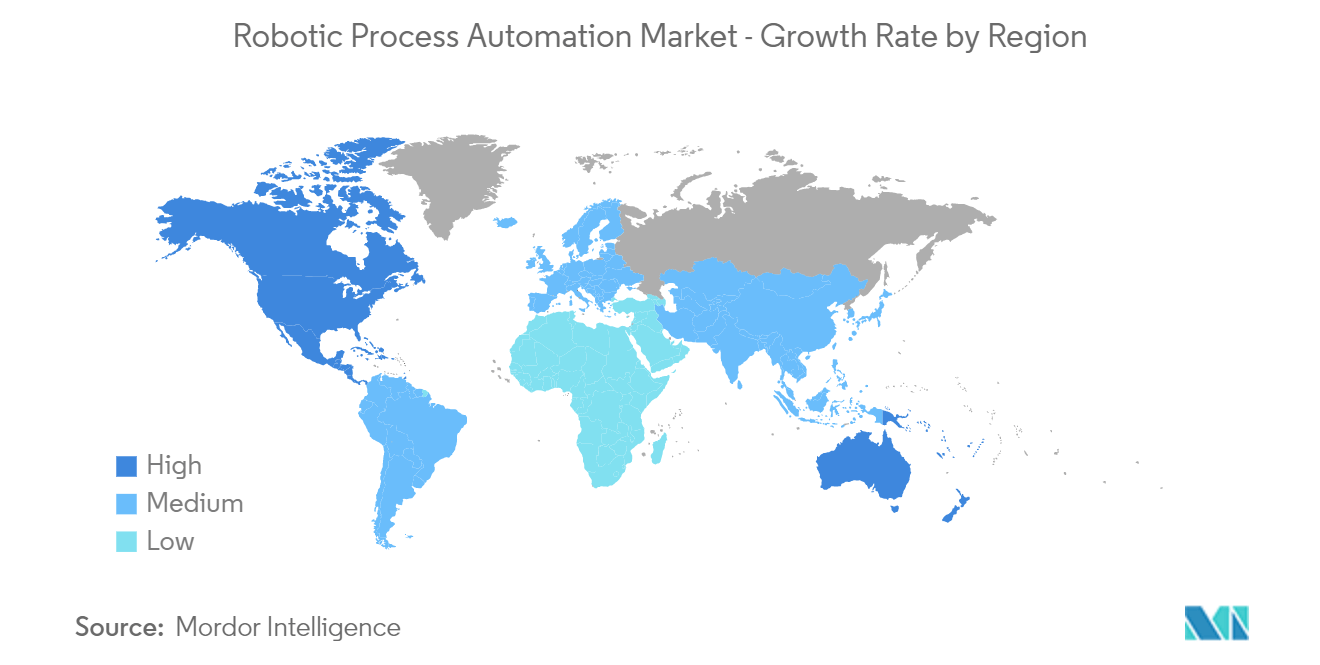Market Trends of Robotic Process Automation Industry
Retail Sector to hold major share in RPA Market
- Returns processing, workflow management, customer support management, accounting and finance, ERP management and marketing, and consumer behavior analysis are some of the applications in the retail sector, with RPA playing an important role. It has been estimated that more than USD 2 trillion can be saved in a global workforce by automating almost half of human tasks, especially in an emerging industry like retail.
- The rise in business operational adjustments brought on by the pandemic-induced work-from-home trend is one of the major drivers of the robotic automation market expansion in the retail industry. The industry also benefits from using cognitive technologies and modifying internal business procedures across organizations.
- Rapid growth in the e-commerce industry is an essential factor adding to the growth of the RPA market. Online sales in the United States are expected to reach approximately 15% to 16% of the overall retail sector, according to the US Department of Commerce and the US Census Bureau.
- Along with adopting innovative practices to attract and engage more customers, the players in the retail industry have been using newer technologies for retail automation to smoothen their processes and gaining a growth momentum to counter various challenges. The growing number of warehouses is making the retail sector use robotic process automation to do tasks more efficiently and effectively. A study by Zebra Technologies on the trends in the retail industry revealed that around 75% of retailers are expected to adopt automation across all critical functions by 2023.

United States Expected to Hold Significant Market Share
- Among the leading innovators and pioneers in adopting robotics, The United States is one of the largest markets. Robot use in the region continues to grow, helping make US companies more competitive and leading to new job growth. Further, according to the Robotic Industries Association (RIA), the most significant driver of the year-to-date growth of industrial robots was an 83% increase in units purchased by automotive OEMs for process automation.
- According to the Association for Advancing Automation, over 180,000 robots have been dispatched to various American companies since 2010, and more than 1.2 million new manufacturing jobs have been created during this time. According to MIT, automotive manufacturing accounted for a significant portion of the demand for industrial robots in the United States, followed by electronic, plastics, and chemical manufacturing. It is anticipated to augment robotic process automation (RPA) growth.
- The increasing initiatives by the government and regulated authorities to boost the adoption of RPA across various industries are expected to fuel market growth over the forecast period. According to UiPath, more than 30 agencies in the region are using its RPA to eliminate compliance issues, improve throughput, and reduce their backlogs.
- Several government organizations and private companies are investing in creating conversational RPA chatbots for automating their processes. For instance, the National Science Foundation (NSF) Organization has created an RPA bot that automates messages and helps to remind people about upcoming public meetings. Since the NSF organization holds several thousand meetings annually, and the RPA bot helps save over 25,000 hours for the administrative staff.



